Zionist Bloodshed in Palestine!
Since its formal establishment, the Israeli regime has committed numerous crimes against the Palestinian people and other countries in the region. Some of these crimes were carried out by the Israeli army, while others were perpetrated by extremist Zionist groups. The Al-Asri Research Center, in a detailed article, examined these crimes and their Palestinian and Arab victims, compiling a comprehensive record.
Crimes of the Israeli Regime After Declaring Its Existence
- Arab al-Uzaymah Massacre in Beersheba: On September 3, 1950, Zionist militias attacked this area, brutally killing 13 women and men.
- Sharafat Massacre: Located southwest of Jerusalem, Sharafat was attacked on February 7, 1951. Zionists committed numerous crimes, killing 10 residents and injuring 8 others. However, the villagers refused to abandon their homes and remain there to this day.
- Beit Jala Massacre: On January 11, 1952, this attack resulted in 7 deaths and dozens of Palestinian injuries.
- Al-Bureij Camp Massacre: On August 28, 1953, numerous homes were destroyed, and dozens were killed. Ariel Sharon led this horrific massacre.
- Qibya Massacre: Occurring on October 14-15, 1953, Israeli forces under Ariel Sharon’s command attacked the village of Qibya, then under Jordanian control, killing 69 Arab citizens, many of whom were hiding in their homes without resistance. Additionally, 45 homes, a school, and a mosque were destroyed.
- Nahalin Massacre: Located in the West Bank, 20 km from Bethlehem, Nahalin had 620 residents in 1945. On March 28, 1954, about 300 Israeli soldiers entered the village, then under Jordanian administration, planting mines and throwing bombs, killing 8 Palestinians and 3 Jordanian soldiers, and injuring 15 others. Some sources report 14 deaths and 19 injuries. Ariel Sharon also led this massacre. The village was attacked again on April 13, 1989, resulting in 5 Palestinian deaths and at least 10 injuries.
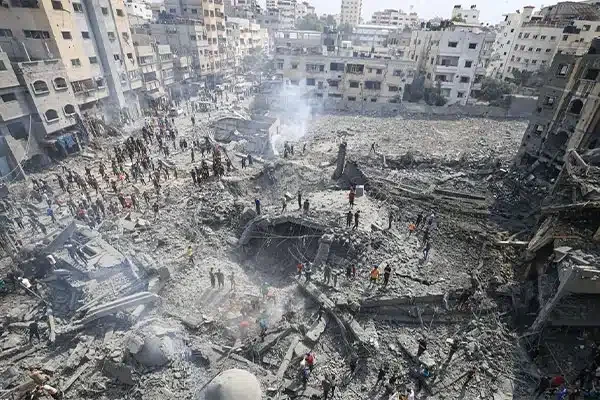
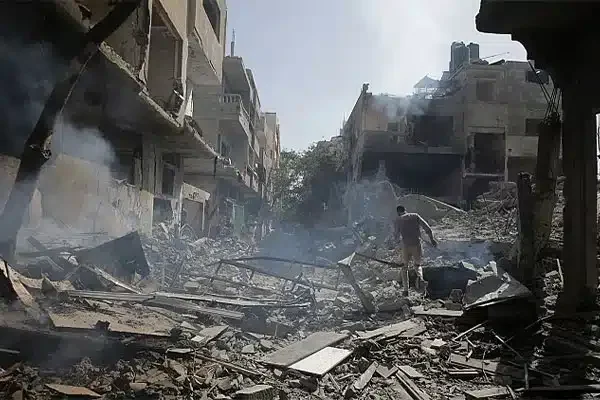
- Deir Ayub Massacre: On November 2, 1954, Zionists attacked this village, beheading two children.
- Gaza Massacre: On February 28, 1955, Israeli occupiers launched their first military attacks on the Gaza Strip, then under Egyptian administration. Moshe Dayan, then Chief of Staff of the Israeli army, masterminded the operation. Israeli paratroopers were deployed, resulting in 39 deaths and 33 injuries.
- Balad al-Sheikh Massacre: On December 31, 1947, a bomb exploded at the Haifa oil refinery, killing several Arab citizens. In retaliation, Palestinians attacked Zionist workers at the refinery, killing or injuring 60. In response, Zionists attacked the villages of Al-Sheikh and Hawassa, entering homes and killing 30 Palestinians in their beds.
- Rehovot Massacre: On February 27, 1948, in Haifa, the Al-Qantara train was blown up, resulting in 27 deaths and 36 injuries.
- Binyamina Massacre: On March 27, 1948, two train explosions occurred. The first killed 24 Palestinians and injured over 61, while the second, on March 31, killed over 40 and injured 60.
- Deir Yassin Massacre: On April 9, 1948, two Israeli military organizations, Irgun (led by Menachem Begin, later Israeli Prime Minister) and Stern Gang (led by Yitzhak Shamir, Begin’s successor), killed over 260 Palestinians.
- Nasruddin Massacre: On April 14, 1948, as clashes escalated in Tiberias between Arabs and Zionists, news of Nasruddin residents’ cooperation with resistance forces reached Israel. Two Irgun and Stern units attacked the village. Residents welcomed the attackers, mistaking them for reinforcements due to their Arab attire, but the Zionists opened fire, destroying all homes.
- Tel Litvinsky Massacre: On April 16, 1948, an Israeli militia attacked a former British army camp where displaced people lived, killing 90 Palestinians.
- Haifa Massacre: On April 22, 1948, Zionists attacked Haifa homes at midnight, killing some residents and forcing others to flee, resulting in 150 deaths and 40 injuries.
- Beit Daras Massacre: On May 21, 1948, Zionist terrorists surrounded the village of Beit Daras, northeast of Gaza, demanding residents leave. As they fled, the villagers were shot, with earlier attacks in March and April. Homes and fields were destroyed, replaced by Zionist settlements.
- Lydda Massacre: The “Lydda Operation,” one of the most infamous massacres, was carried out by the Palmach unit on July 12-13, 1948, to suppress the Palestinian revolution. Israeli forces were ordered to kill anyone on the streets, with heavy artillery bombing homes. Over 250 Palestinians were killed, according to the brigade commander’s report.
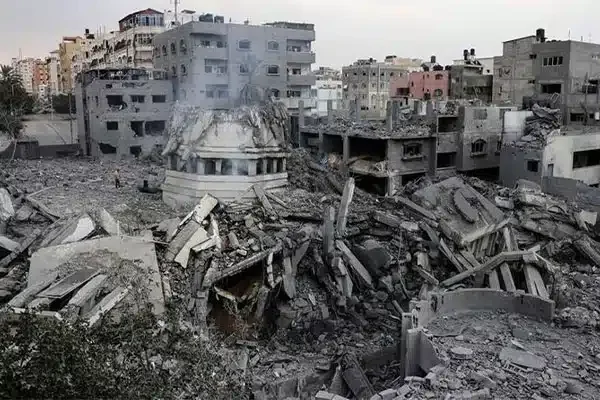
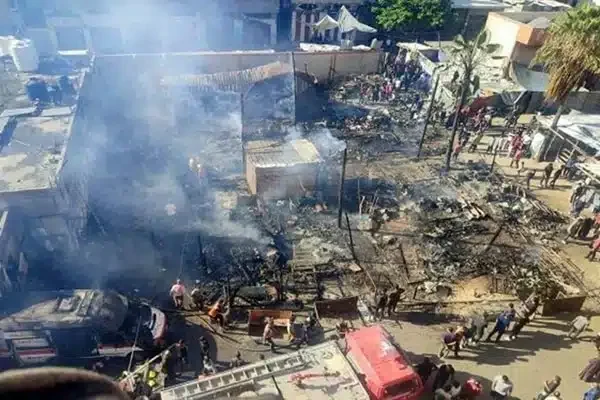
- Sharafa Massacre: At 3 a.m. on February 7, 1951, three Israeli military vehicles entered an area southwest of occupied Jerusalem, heading to Sharafat. Carrying 30 soldiers, they planted bombs in the walls of the mayor’s house and neighboring homes, destroying them under cover of gunfire, killing 10 (including 2 elderly men, 3 women, and 5 children) and injuring 8 (all women and children).
- Bethlehem Massacre: On January 26, 1952, an Israeli patrol destroyed a home in Bethlehem, killing the owner and his wife. Another patrol attacked a house 1 km north of Bethlehem, killing the owner, his wife, and two children, and injuring two others. A third patrol entered Al-Latrun, shelling homes in Imwas village.
- Falama Village Massacre: On January 29, 1953, a group of 120-130 Zionists attacked Falama village in the West Bank, shelling it with artillery, killing 9 and injuring 20.
- Al-Bureij Camp Massacre: On August 28, 1953, Israeli forces attacked the Al-Bureij Palestinian camp in Gaza, killing 20 and injuring 62.
- Qalqilya Massacre: On October 10, 1953, Qalqilya residents announced plans to buy weapons for jihad against Israeli occupiers, enraging Zionists. Moshe Dayan vowed to “plow the city.” At 9 p.m., Israeli forces, backed by artillery and warplanes, attacked from three directions, cutting phone lines. Despite resistance, they killed 70 residents and caused significant material damage.
- Yalu Massacre: On November 2, 1945, Zionists killed three Palestinian children collecting firewood without provocation and fled.
- First Gaza Massacre: Due to Zionist resentment toward Egypt, which administered Gaza, numerous crimes were committed. On February 28, 1955, Israeli forces crossed the ceasefire line, targeting Gaza’s infrastructure, including a water purification plant and an Egyptian barracks, killing 39 and injuring 33.
- Second Gaza Massacre: Khan Yunis was attacked on May 30 and September 1, 1955, with heavy artillery. The first attack killed 20 and injured 20; the second killed 46 and injured 5.
- Al-Rahwa Massacre: On September 11-12, 1956, Zionist forces attacked a police station and school in Al-Rahwa, killing 15 Palestinians and destroying the school.
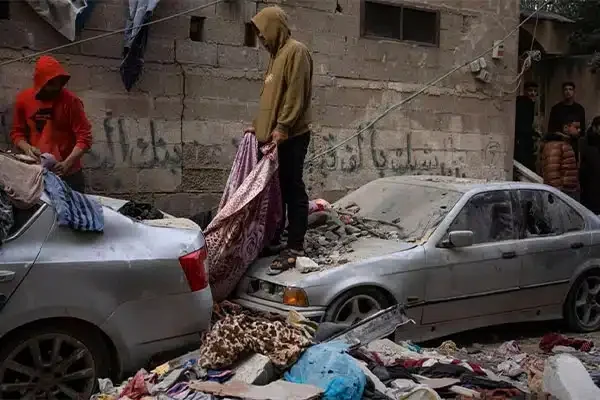
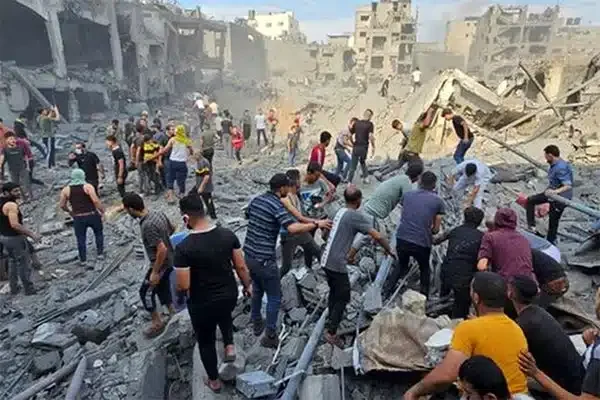
- Kafr Qasim Massacre: On October 29, 1956, before attacking Egypt, Israel imposed a curfew in Kafr Qasim without informing residents, advancing the curfew time. Uninformed citizens entering the town were targeted. A group of four Palestinian workers, who greeted Israeli soldiers, was shot, killing three; the fourth survived by playing dead. Twelve women returning from olive picking were also attacked. In 90 minutes, 49 residents were killed, and 13 injured, with soldiers stealing victims’ belongings.
- Third Khan Yunis Massacre: On November 3, 1956, during Israel’s occupation of Khan Yunis, 275 Palestinians from the village and nearby camps were killed in mass shootings.
- Al-Samu Massacre: On November 13, 1966, Zionists attacked Al-Samu village in the Hebron Hills, under Jordanian control, with warplanes and artillery supporting infantry, destroying 125 homes, a school, a hospital, and a mosque, killing 18 and injuring 130.
- Abu Zaabal Factory Massacre: On February 12, 1970, during the War of Attrition with Egypt, Israeli warplanes attacked the Abu Zaabal factory, a mineral production company, killing 70 workers, injuring 69, and burning the facility.
- Sidon Massacre: On July 16, 1982, Israel attacked Lebanon, killing over 80 Lebanese.
- Sabra and Shatila Massacre: From September 16-18, 1982, in the Sabra and Shatila Palestinian refugee camps, Israeli forces entered Beirut and attacked the camps. While Lebanese militias were the primary perpetrators, the operation was logistically supported and prepared by Israel. Israeli artillery and warplanes bombed the camps, and the massacres continued under Zionist supervision, with supplies provided to the Lebanese militias. Over 1,500 unarmed Palestinians and Lebanese were killed, with acts including rape and mutilation.
- Ain al-Hilweh Camp Massacre: On May 16, 1984, before withdrawing from Sidon, Israel ordered its mercenary Husayn Akr to attack the Ain al-Hilweh camp, backed by 1,500 Zionist soldiers and 150 armored vehicles. The attack killed 15 Palestinians, destroyed 140 homes, and detained 150 people.
- Sohmor Massacre: On September 20, 1984, Israeli forces and their Lebanese mercenaries, led by Antoine Lahad, attacked Sohmor village in southern Lebanon, following the killing of four of Lahad’s mercenaries. They gathered residents and opened fire, killing 13 and injuring 40.
- Hammamat al-Shatt Massacre: On October 11, 1985, after the PLO’s withdrawal from Beirut, Israeli warplanes attacked PLO offices in Tunis, targeting Hammamat al-Shatt, killing 50 and injuring over 100.
- Ibrahimi Mosque Massacre: On February 25, 1994, the last Friday of Ramadan, after the Oslo Accords, Israel allowed extremist Zionist Baruch Goldstein to enter the Al-Aqsa Mosque with a rifle. He killed 60 Palestinian worshippers and injured dozens. In protests condemning the attack, 53 more Palestinians from various regions, including Hebron, were killed. Israel condemned Goldstein to deflect responsibility.
- Qana Massacre: On April 18, 1996, the first Qana massacre occurred during Israel’s “Operation Grapes of Wrath” (April 11-27), the fourth major attack on Lebanon after 1978, 1982, and 1993. Targeting 159 southern and western Lebanese villages with 1,500 warplane sorties and over 32,000 shells, it killed 250 Lebanese, including 110 from Qana, and injured 368, mostly civilians. Over 60 children were orphaned. Israel claimed the attack was a mistake to avoid public backlash.
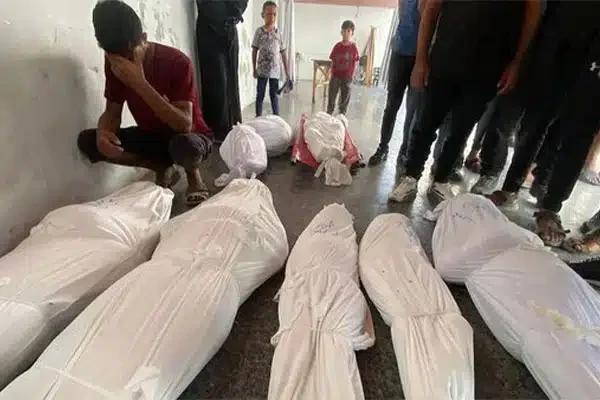
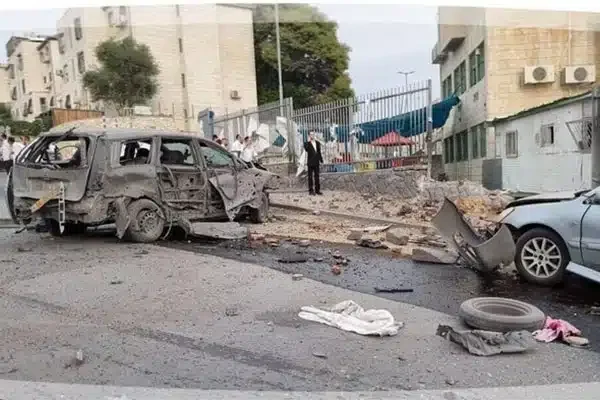
Zionist Crimes Between 2000 and 2005
The Second Palestinian Intifada, or Al-Aqsa Intifada, occurred from 2000 to 2005, during which Israel killed over 4,412 Palestinians and injured 48,322.
- Jerusalem Shrine Massacre (Intifada Start): On September 29, 2000, shortly before Friday prayers ended at Al-Aqsa Mosque, Zionists fired on worshippers, killing 13 and injuring 475. This followed Ariel Sharon’s desecration of the mosque the previous day, sparking public outrage.
- Hebron Massacre: On October 2, 2000, Israeli forces attacked Al-Jalil residents, killing 13 and injuring hundreds during protests supporting the West Bank and Gaza intifada.
- Nablus Massacre: On July 31, 2001, Israeli helicopters bombed a Hamas military post, killing 8, including 2 children.
- Beit Rima Massacre: On October 24, 2001, Israeli forces attacked Beit Rima near Ramallah, killing 16 and injuring dozens, detaining 50, using tanks, Apache helicopters, and 20 military jeeps.
- Khan Yunis Massacre: On November 22, 2001, a bomb explosion in Al-Burewat killed 5 Palestinian children returning from school.
- Rafah Massacre: On February 21, 2002, Israeli forces attacked Rafah from land, air, and sea, killing at least 10 and injuring 80.
- Balata and Jenin Massacre: From February 28 to March 2, 2002, Jenin camp faced heavy attacks with tanks and Apache helicopters, killing over 31 and injuring 300.
- Second Jenin Massacre: On April 2, 2002, Israel attacked Jenin with over 20,000 troops, 400 tanks, and air support until April 14. Resistance forces defended the camp, but Israel’s failure to occupy it led to escalated airstrikes. A mass grave discovery obscured the true death toll, but the area was devastated.
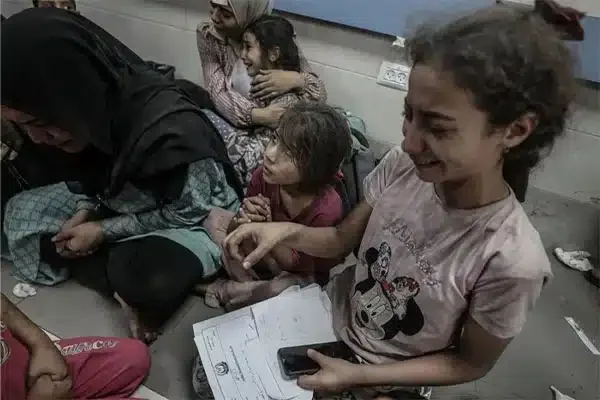
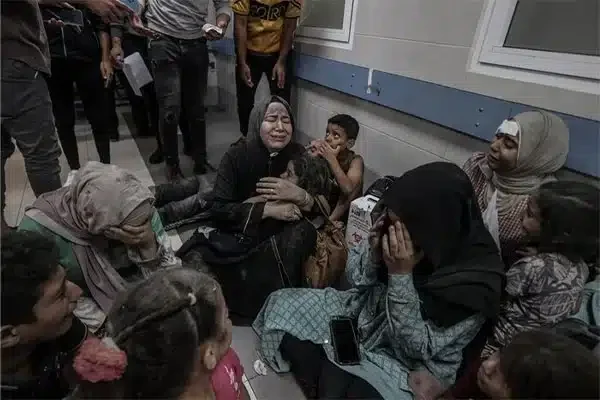
- Hayy al-Daraj Massacre: On July 22, 2002, an Israeli F-16 fired missiles at a residential area near Yarmouk Stadium in Gaza, killing 174 Palestinians, including 11 children and 3 women, targeting Salah Shehadeh, a Hamas commander, who died with his wife and daughter. 140 others were injured.
- Sheikh Ajlin Massacre: On August 28, 2002, an Israeli artillery attack in southern Gaza killed 4 and injured 5 from one family.
- Tubas Massacre: Apache helicopters attacked two Palestinian vehicles in Tubas, killing 5 and injuring 10.
- Hebron Massacre: Less than 24 hours after Tubas, Israeli forces killed 4 Palestinian workers returning from work in Hebron.
- Khan Yunis Massacre: On October 7, 2002, Israeli ground forces, with over 60 tanks and Apache helicopters, attacked Khan Yunis, killing 14 and injuring 147.
- Al-Bureij Camp Massacre: On December 6, 2002, the second day of Eid al-Fitr, Israeli forces attacked Al-Bureij camp, killing 10, including 2 UNRWA workers, and injuring 20, using tanks, helicopters, and heavy vehicles.
- Hayy al-Zaytoun Massacre: On January 26, 2003, an unprecedented land, air, and sea attack on Gaza killed 13 and injured 65, involving over 60 tanks, helicopters, and armored vehicles.
- Jabalia Camp Massacre: On March 6, 2003, Israeli forces attacked Jabalia camp, killing 11 and injuring 140 with tanks, helicopters, and heavy shelling.
- Hayy al-Shuja’iyya Massacre: On May 1, 2003, Israeli forces attacked eastern Gaza, killing 16 and injuring 35 with heavy ground and air equipment.
- Shari’ al-Qitaa Massacre: On June 11, 2003, two Israeli helicopters attacked a crowded Gaza street, targeting Hamas members, killing 7, including 2 women and a child, and injuring dozens.
- Hayy al-Zaytoun Massacre: On January 28, 2004, amid peace talks led by Palestinian Authority’s Ahmad Qurei, Israeli forces attacked Hayy al-Zaytoun, killing 13 with tanks and helicopters.
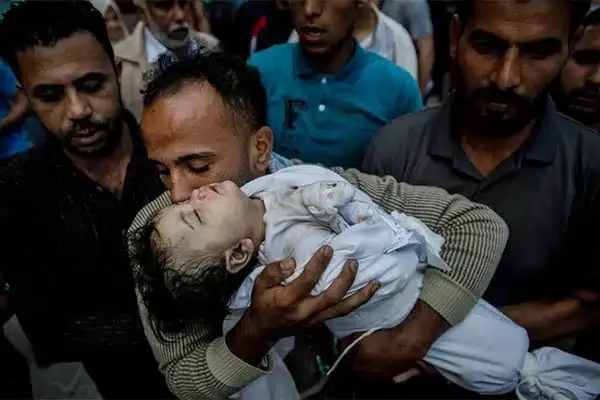

- Hayy al-Shuja’iyya Massacre: On December 11, 2004, Israeli special forces attacked, killing 15 and injuring 44, including 20 children under 18, destroying a three-story home.
- Nuseirat and Al-Bureij Massacre: On March 7, 2004, Israeli special forces, tanks, and Apache helicopters attacked Nuseirat and Al-Bureij, killing 15, including 3 children, and injuring over 180.
- Hayy al-Sabra Massacre: On March 22, 2004, Israeli helicopters assassinated Sheikh Ahmad Yassin, Hamas founder, killing 7 and injuring 15.
- Rafah Massacre: From May 18-20, 2004, Israeli forces attacked Rafah, killing 56 and injuring 150 with tanks, helicopters, and warplanes, including a missile strike on a women and children’s protest on May 19.
- Nablus Massacre: On June 26, 2004, Israeli forces attacked Nablus, killing 9, detaining dozens, and destroying homes and businesses.
- Jabalia Massacre: Israeli forces attacked Jabalia camp, killing 69 and injuring dozens with ground and air assaults, reducing the camp to rubble—the third massacre there since the Al-Aqsa Intifada.
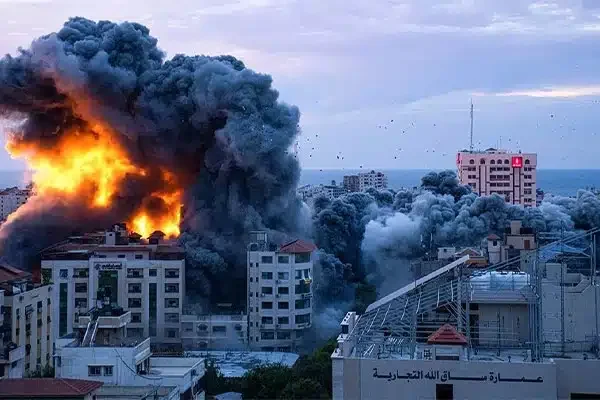
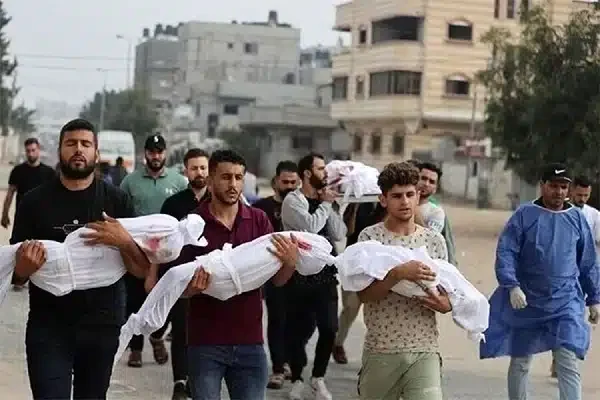
- Al-Sha’af Massacre: On September 6, 2004, Israeli forces attacked Al-Sha’af, killing 15 and injuring over 50, with heavy clashes with Palestinian resistance.
- Beit Lahia Massacre: On June 4, 2005, Israeli forces attacked Beit Lahia, killing 8, including children, and injuring 14, mostly children aged 5-16. Mahmoud Abbas, preparing for elections, called Israel the “Zionist enemy” for the first and last time.
- Shfa Amr Massacre: A Zionist extremist’s random shooting killed 4 Palestinians.
- Egyptian Prisoners Massacre: On October 12, 1995, Egypt’s Al-Jumhuriya newspaper reported that Israeli forces lined up Egyptian prisoners, claimed to free them, then shot them toward the sea, killing about 3,000 in repeated operations.
- Lebanon War: Qana faced two massacres. In April 1996, during “Operation Grapes of Wrath,” 250 Lebanese were killed, including 110 from Qana. In 2006, Israeli airstrikes killed 57 in Qana, mostly women and children, and 1,084 Lebanese overall, two-thirds civilians.
- First Gaza War: Starting December 27, 2008, Israeli warplanes attacked Hamas infrastructure for 22 days, failing to achieve objectives but killing 1,400 Palestinians, 80% civilians.
- Second Gaza War: The eight-day war, starting November 24, 2012, with the assassination of Hamas commander Ahmad al-Jabari, killed 189 Palestinians using banned weapons like white phosphorus.
- Third Gaza War: Starting July 8, 2014, and lasting 51 days, Israel failed to eliminate Palestinian resistance but killed 2,016 Palestinians, including 541 children, 250 women, and 95 elderly, injuring 10,193, including 3,084 children, 1,970 women, and 368 elderly.
- Operation Guardian of the Walls: During the May 2021 Israel-Palestine crisis, 261 Palestinians, including 67 children and 41 women, were killed, and over 2,200 injured, including 685 children and 480 women, some with long-term disabilities.
- 2023 Israel-Hamas War (October 2023-Present): By November 21, 2023, 53 journalists (46 Palestinian, 4 Israeli, 3 Lebanese), over 100 UN staff, and nearly 15,000 Palestinians, including about 6,000 children and 4,000 women, were killed by roughly 12% of Israel’s war missiles. Additionally, 190 Palestinians were killed in the West Bank by Israeli forces and settlers.
What has been described is the eighty-year oppression of the Palestinian people and their land by Israelis. The question remains: Given the performance of international organizations to date, can we hope to restrain this violent and inhumane regime?
The Greater Israel Project in the Past and Present


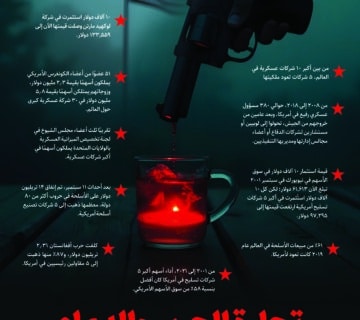

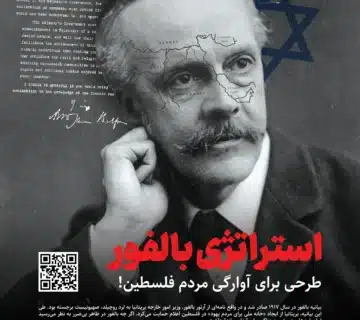
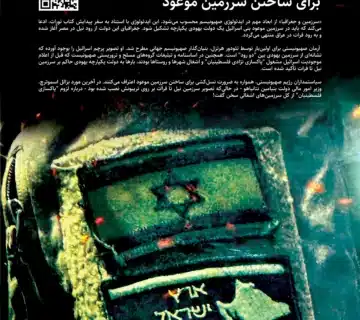
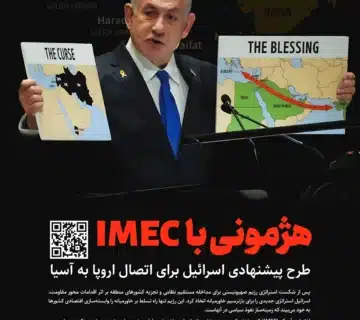
no comment